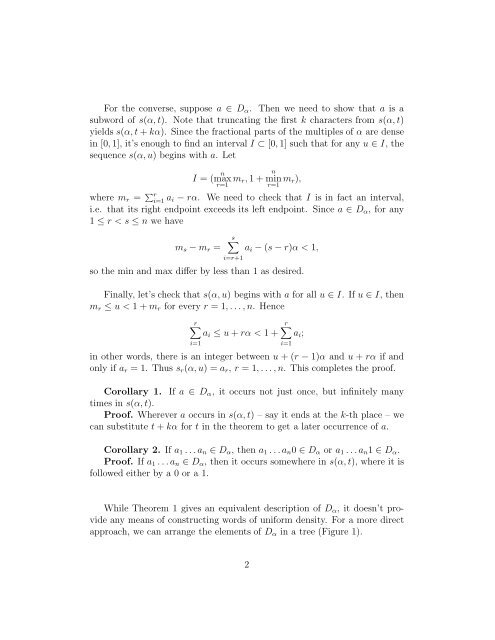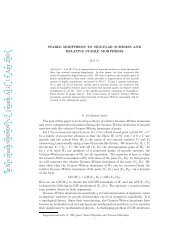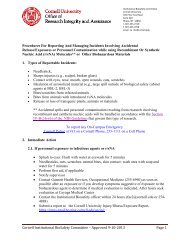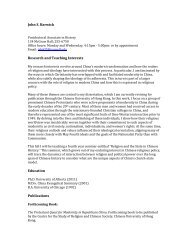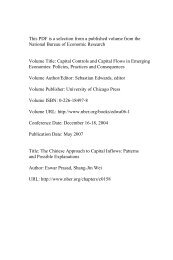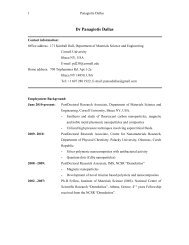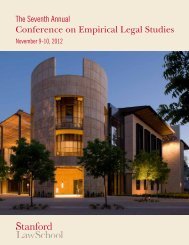Some basic results on Sturmian words
Some basic results on Sturmian words
Some basic results on Sturmian words
You also want an ePaper? Increase the reach of your titles
YUMPU automatically turns print PDFs into web optimized ePapers that Google loves.
For the c<strong>on</strong>verse, suppose a ∈ D α . Then we need to show that a is a<br />
subword of s(α, t). Note that truncating the first k characters from s(α, t)<br />
yields s(α, t + kα). Since the fracti<strong>on</strong>al parts of the multiples of α are dense<br />
in [0, 1], it’s enough to find an interval I ⊂ [0, 1] such that for any u ∈ I, the<br />
sequence s(α, u) begins with a. Let<br />
I = ( max<br />
n<br />
m r, 1 + min<br />
n<br />
m r),<br />
r=1 r=1<br />
where m r = ∑ r<br />
i=1 a i − rα. We need to check that I is in fact an interval,<br />
i.e. that its right endpoint exceeds its left endpoint. Since a ∈ D α , for any<br />
1 ≤ r < s ≤ n we have<br />
m s − m r =<br />
s∑<br />
i=r+1<br />
a i − (s − r)α < 1,<br />
so the min and max differ by less than 1 as desired.<br />
Finally, let’s check that s(α, u) begins with a for all u ∈ I. If u ∈ I, then<br />
m r ≤ u < 1 + m r for every r = 1, . . . , n. Hence<br />
r∑<br />
r∑<br />
a i ≤ u + rα < 1 + a i ;<br />
i=1<br />
i=1<br />
in other <strong>words</strong>, there is an integer between u + (r − 1)α and u + rα if and<br />
<strong>on</strong>ly if a r = 1. Thus s r (α, u) = a r , r = 1, . . . , n. This completes the proof.<br />
Corollary 1. If a ∈ D α , it occurs not just <strong>on</strong>ce, but infinitely many<br />
times in s(α, t).<br />
Proof. Wherever a occurs in s(α, t) – say it ends at the k-th place – we<br />
can substitute t + kα for t in the theorem to get a later occurrence of a.<br />
Corollary 2. If a 1 . . .a n ∈ D α , then a 1 . . .a n 0 ∈ D α or a 1 . . .a n 1 ∈ D α .<br />
Proof. If a 1 . . .a n ∈ D α , then it occurs somewhere in s(α, t), where it is<br />
followed either by a 0 or a 1.<br />
While Theorem 1 gives an equivalent descripti<strong>on</strong> of D α , it doesn’t provide<br />
any means of c<strong>on</strong>structing <strong>words</strong> of uniform density. For a more direct<br />
approach, we can arrange the elements of D α in a tree (Figure 1).<br />
2


